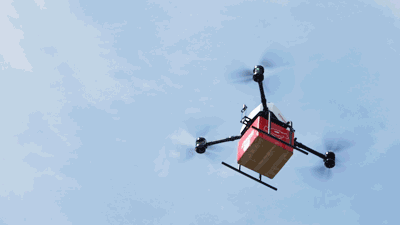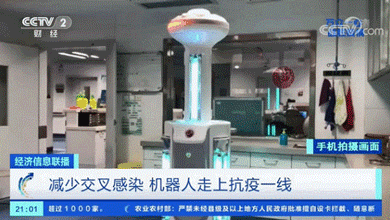他山石5周年 | 智慧城市2.0: 硅谷的观点

新冠疫情给世界带来了巨大的损失,传统意义上的智慧城市在新冠的冲击下溃不成军,似乎人工智能、智慧城市、大数据、基因编辑等概念溃不成军。他山石独家专家、硅谷精神布道师皮埃罗、硅谷人工智能研究院院长皮埃罗·斯加鲁菲教授提出智慧城市2.0概念 - 走向一个智慧安全城市建设的时代。
皮埃罗·斯加鲁菲
硅谷精神布道师
硅谷人工智能研究院创立者兼院长
《硅谷百年史》、《人类2.0》、《智能的本质》等书作者

以下为文章全文,作者:皮埃罗·斯加鲁菲
当前的新冠肺炎疫情突显出我们的城市对自然疾病或人为生物恐怖主义的准备不足。人口在各城市、国家和大洲之间的流动速度越来越快,在大城市的集中度越来越高,几乎可以肯定,未来致命的病毒一旦出现就会迅速传播,这将成为人类生命和经济发展的最大威胁之一。
The current Covid-19 emergency has highlighted how unprepared our cities are for cases of natural or human-made bioterrorism. The increased and faster movement of people across cities, countries and continents, and their increasing concentration in big cities, make it all but certain that deadly viruses will emerge and spread rapidly in the future and will become one of the biggest threats to lives and economies.
随着信息和通信技术的发展,我们的城市已经变得“智能”,但现在也需要变得“安全”。当一座城市处于封锁状态时,所有的紧急活动都可以换成机器人来运行处理,理想情况下,还包括处理许多日常事务。机器人不会被感染,一天24小时工作,而且可以无限制造。
Our cities have become “smart” with the injection of information and communication technologies, but now they need to become also “safe”. When a city goes under lockdown, all the emergency activities could be run by robots, as well as, ideally, many daily routines. Robots don't get infected, work 24 hours a day, and can be made in an unlimited number.
通过对合适的机器人进行开发及互联可以实现此目标。
This goal can be achieved with the development and interconnection of appropriate robots.

可以扩建医院、为被隔离的病人
建造临时住所的机器人
Robots that can expand hospitals as well as build temporary housing for quarantined patients.
建筑业(一个价值10万亿美元的全球产业)是依赖密集的劳动力、自动化程度最低的行业之一。根据2017年麦肯锡的研究报告《重塑建筑业》(Reinventing Construction)显示,2005至2015年间,建筑业数字化渗透的年平均增长率仅为4%,是所有行业中增速最低的行业之一。
The construction industry (a $10 trillion global industry) is one of the least automated industries that depend on manual-intensive labor. According to the McKinsey report “Reinventing Construction” (2017), between 2005 to 2015 the construction industry posted an average year-over-year growth in digitization of 4%, one of the lowest of any industry.
施工现场通常是机器人自动化的主要障碍。在没有主要障碍的地方,建筑机器人已经在进行作业了。例如,阿姆斯特丹2018年使用机器人建造出了世界上第一座3D打印钢桥。在施工现场存在主要障碍的地方,可以使用遥控机器人。按需建造大型建筑的机器人并不存在,但我们相信所需的技术已经足够成熟。机器人和3D打印的结合特别具有吸引力,在过去的几年中,一些初创公司已经尝试过这种结合。控制3D打印机的移动机械臂已经面世:它们遵循设计师提供的指令,对整栋建筑进行3D打印。
The construction worksite is generally the primary obstacle to robotic automation. Where this is not a major issue, construction robots already operate. Amsterdam, for example, in 2018 used robots to build the first ever 3D-printed bridge. Where the construction site is a major obstacle, remote-controlled robots can be employed. Robots that can build large buildings on demand don’t exist but we believe that the required technologies are mature enough. The combination of robots and 3D-printing is particularly attractive. This combination has been experimented by a few startups over the last few years. Mobile robotic arms that control a 3D-printer are already available: they follow the instructions provided by the designer and 3D-print an entire building.

08年荷兰建造的世界首个3D打印钢桥初亮相
30人同时上桥没问题
到目前为止,这些都属于静态机器人,它们还不能运输和安装结构。如果我们想要取代施工现场中的人员,让机器人运输和安装结构就是下一步需要做的事。
So far these are static robots that cannot transport the structure and install it next to other structures. That is the next step if we want to remove the human presence in the construction site.
我们还需要取消人工监督员,这可以通过网真技术实现,使用无人机航拍图像来生成建筑工地的3D地图(就像总部位于旧金山的Skycatch公司为日本小松集团所定制生产的无人机那样)。自2017年圣罗莎火灾和2018年天堂镇大火摧毁了整个城镇以来,迫切需要为数千人立即建造新的住房,加利福尼亚州一直致力于建筑机器人的研究,而皮埃罗所创建的硅谷人工智能研究院也一起参与了此类研究。
We also need to remove the presence of human supervisors and this can be done via telepresence, using drones to generated 3D maps of construction sites (like San Francisco-based Skycatch does for Japan’s Komatsu). The state of California has been studied robotic construction since the fires of Santa Rosa (2017) and Paradise (2018) that destroyed entire towns, therefore creating the need for immediate construction of new housing for thousands of people. We have been involved in such studies with the state of California.

可以取代医院护士和医生的机器人
Robots that can replace nurses and doctors in hospitals.
这样的需求已经存在——据美国劳工统计局(U.S. Bureau of Labor Statistics)估计,对护士岗位需求的增长速度已经快于大多数工作岗位。2018年,美国退伍军人事务部(U.S. Department of Veterans Affairs)发现,96%的诊所不止一次出现了“严重”的职业短缺现象。一些国家未来面临着老年人口增加,而护理人员却不足的情况。
The demand was already there: the U.S. Bureau of Labor Statistics estimates that jobs for nurses are already growing faster than most jobs, and in 2018 the U.S. Department of Veterans Affairs found that 96 percent of its clinics reported at least one “severe” occupational shortage. Several countries face a future of an increasing elderly population paired with an insufficient amount of healthcare workers able to care for it.
幸运的是,用于医院护士自动化的“护士机器人”已经在医院中投入使用,其技能也在不断提高。我们估计,2019年像Moxi(由Diligent Robotics设计)、YuMi(由瑞士ABB集团制造)和TUG(由Aethon制造)这样的护士机器人可以完成30%的不涉及与患者互动的任务。它们主要是做些跑腿的活,比如给患者送药和食物托盘、采集血液和尿液样本并将样本送到实验室、更换床单、装卸离心机等,当然还包括对地板进行吸尘和清洗。这些护士机器人都配有内置的地图和传感器,可以在医院大厅中进行导航,而且它们能与电梯、警报器和自动门进行无线通信。
Luckily, “nursebots” for hospital nurse automation are already employed in hospitals and their skills are improving. In 2019 we estimate that nursebots like Moxi (designed by Diligent Robotics), YuMi (made in Switzerland by ABB) and Tug (made by Aethon) could take care of 30% of the tasks that don’t involve interacting with patients, mostly running errands around the floor like delivering medications and food trays to patients, picking up blood and urine samples and dropping off specimens to the laboratory, replacing linens, loading and unload centrifuges, and of course vacuuming and washing floors. They are equipped with a built-in map and sensors to navigate hospital halls, and they communicate wirelessly with elevators, alarms and automatic doors.

YuMi护士机器人
较大型的机器人(如日本理研和住友理工实验室开发的广为人知的RIBA“熊型机器人”)或外骨骼机器人(如加州大学伯克利分校的机器人与人体工程学实验室,尤其是奥斯汀项目,以及斯坦福大学的实验室设计的外骨骼机器人)可以用来移动患者。
Larger robotic machines (like the well-publicized RIBA “bear” robot developed by Riken and Sumitomo Riko Labs in Japan) and/or exoskeletons (such as the ones designed by UC Berkeley’s Human Engineering and Robotics Laboratory, in particular the Austin project, and by Stanford’s Biomechatronics Laboratory) can be used to move patients around.
像Pepper和Dinsow等热门机器人已经可以为患者提供指导,并帮助他们进行自我护理(锻炼和服药)。
Popular robots like Pepper and Dinsow already provide patient education and assist them in self-care (exercise and take medicines).
由VGo和Suitable技术公司(或日本Kokoro公司的类人机器人Actroid)制造的远端临场机器人(Telepresence Robots)可以远程复制医生。
Telepresence robots made by VGo and Suitable Technologies (or the humanoid Kokoro’s Actroids) can replicate a doctor in a distant location.
2019年11月,一家新医院在斯坦福大学开业,配备了23台送货机器人(负责送洗衣服和倒垃圾等杂务)和3台药剂师机器人(负责药品库存和自动生成新药品订单等事务)。
In November 2019 a new hospital opened at Stanford with 23 delivery robots (for chores such as delivering laundry and taking out the trash) and 3 pharmacist robots (for chores like inventory of drugs and automatically generating new orders of drugs).
自2011年以来,加州大学旧金山分校一直在测试一家机器人药房,里面的机器人负责计数和处理药物,所有这些机器人都只是做不需要与人类互动的家务。下一步是为患者配备能与机器人进行无线通信的可穿戴设备,这将协调人类患者和机器人之间进行互动。
Since 2011 UC San Francisco has been testing a robotic pharmacy where robots count and process medications. All these robots are limited to chores that don’t require interaction with humans. The next step is to equip patients with wearables that communicate wirelessly with the robots. The wearables will mediate the interaction between human patients and robots.

可以向自我隔离的人运送食物和药品的
机器人和无人机
Robots and drones to deliver food and medicines to self-quarantined people.

这是一项相对容易实施的技术,但需要对仓库、家庭及政府政策进行整合。
This is a relatively easy technology to implement but needs to integrate warehouses, households, and government policies.

京东无人机运送物资


探测并中和建筑物内生物有机体的机器人
Robots to detect and neutralize biological organisms in buildings.

随着病原体抵抗最新的抗生素和消毒剂而产生变异,对抗医院获得性感染(HAI)的战争持续升温。
Hospital-acquired infection (HAI) front, but the war wages on as pathogens mutate to resist the latest antibiotics and disinfectants.
医院获得性感染是一个严重的问题。根据美国疾病控制和预防中心(CDC)的数据,一项对急性护理医院的调查发现,每天每25名患者中就有1例医院获得性感染,每年有7.5万人死于医院获得性感染。
HAIs are a significant problem. According to the U.S. Centers for Disease Control and Prevention (CDC), a survey of acute care hospitals found 1 in 25 hospital patients has at least 1 HAI on any given day and that 75,000 deaths per year are due to HAIs.
紫外线消毒机器人是微生物脱敏设备的“领先者”,也可用于邮政快递车辆和医疗器械的消毒以及辅助生活和长期护理设施的消毒。
Leader in microbial desensitizing devices, UV-Disinfectant robots can also be used to sanitize EMS vehicles and medicopters, as well as in assisted living and extended care facilities.
紫外线消毒机器人可以给整个房间提供医院级别的消毒,疗养院、野战医院和生物危险区都可以在几分钟内消毒完毕。
UV disinfection robots offer hospital grade full-room sterilization. Nursing homes, field hospitals, and biohazard zones could all be sanitized in a matter of minutes.
这些机器人消毒速度快、效率高,清除细菌的能力远远超过人类。它们可以四处走动、攻击阴暗的区域,而这样的区域往往存在许多有害生物,经常容易被消毒小组遗漏。
The robots are fast and efficient, able to eliminate far more bacteria than humanly possible. Their ability to move around enables them to attack shadowed areas where many harmful organisms tend to manifest in places that are often missed by sanitization teams.

新加坡uv紫外线消毒机器人自动消毒中

按需种植粮食的机器人
Robots to grow food on demand.
2019年,硅谷初创公司Iron Ox开始销售其机器人农场种植的产品,这种农场只需一英亩土地就可以实现相当于30英亩传统农业面积的生产力,而且就位于售卖产品的超市附近。
In 2019 Silicon Valley startup Iron Ox started selling the produce grown in its robotic farm that can achieve the equivalent of 30 acres of traditional farming in just a single acre, and an acre located very near the supermarket where it is sold.
得益于“农场机器人”(包括播种机器人、收割机器人、除草机器人),荷兰在2019年成为仅次于美国的世界第二大食品出口国。诸如加州开源项目Farm.bot使用的远程控制应用程序可以让人类远程控制园艺操作。
Thanks to its “farm-bots” (including sowing robots, harvester robots, weedeater robots), in 2019 the Netherlands became to the world’s second-biggest food exporter after the USA. Remote-control apps like the one used by the open-source California project Farm.bot could allow humans to control the gardening operations from a distance.

结合生物工程食品,机器人农场的生产力可能更高,甚至可以生产出更健康的食品。2019年,快餐连锁店汉堡王(Burger King)在其菜单中添加了一种由硅谷初创公司Impossible Foods生产的植物性汉堡,具有肉类的味道。向生产素肉的转变还有一个额外的好处,那就是不仅将减少温室气体排放、还能减少对高达95%的水及土地的使用。
Combined with bioengineered food, the robotic farm could be even more productive, and produce even healthier food than we produce today. In 2019 the fast-food chain Burger King added to its menu a plant-based burger made by Silicon Valley startup Impossible Foods with a bioengineered taste of meat. The shift to cultured meat has the additional advantage of reducing greenhouse-gas emissions and of decreasing the use of water and land by as much as 95%.

诊断疾病的机器人
Robots to diagnose diseases.
从早期开始,流行病学就一直是机器学习的目标,因为流行病学是关于识别模式的。
Epidemiology has been a target for machine learning since the early days because epidemiology is about recognizing patterns.
2019年,佐治亚大学公布了其使用系统“随机森林”来识别沙门氏菌爆发来源的结果。2018年,谷歌发布了使用“Finder”后令人振奋的成果,“Finder”是一种机器学习系统,用于实时检测食源性疾病。最大的成功案例是AIME(医学流行病学中的人工智能,奇点大学的一个分支机构)于2018年部署的系统,用于应对马来西亚登革热的暴发,准确预测率接近85%。加拿大健康监测平台Bluedot在2016年正确预测了南佛罗里达州寨卡病毒的爆发地点,并在2020年1月仅通过核查航空票务数据就正确预测了新冠肺炎会从武汉跳至泰国、台湾、韩国和日本。
In 2019 the University of Georgia published the results of using their system Random Forest to identify the source of Salmonella outbreaks. In 2018 Google published the promising results of using “Finder”, a machine-learning system for real-time detection of foodborne illness. The biggest success story has been the system by AIME (Artificial Intelligence in Medical Epidemiology, a spinoff of the Singularity University) which was deployed in 2018 against outbreaks of dengue fever in Malaysia with a nearly 85% accurate prediction rate. The Canadian health monitoring platform Bluedot in 2016 correctly predicted the location of the Zika outbreak in South Florida and in January 2020 correctly predicted that Covid-19 would jump from Wuhan to Thailand, Taiwan, Korea and Japan simply by checking airline ticketing data.

通过将自然语言处理、基因数据库和机器学习相结合,我们可以建立一个扫描社交媒体和本地新闻的系统,以识别疑似流行病,然后确定其源头。就在新冠肺炎疫情爆发前几个月,《公共卫生与紧急事件》(Journal of Public Health and Emergency)杂志出版了一期特刊(2019年6月,第3卷),介绍了数字工具在传染病流行病学中,特别是针对非典(SARS)和中东呼吸综合征(MERS)等病例的使用。
By combining natural-language processing, genetic databases and machine learning, we could build a system that scans social media and local news to identify suspected epidemics and then identify the source. Just a few months before the Covid-19 outbreak, the Journal of Public Health and Emergency devoted a special issue (Vol 3, June 2019) to the use of digital tools for infectious disease epidemiology, specifically for cases such as SARS and MERS.

实时生物传感器
Real-time biosensors.
为了遏制流行病的蔓延,各城市需要在医院和急诊室快速筛查出患病人员,但目前可用的检测病毒的方法既费力又缓慢。
In order to contain the spreading of an epidemic, cities need to quickly screen people at hospitals and emergency clinics but currently available methods to detect viruses are laborious and slow.
令人欣慰的是,斯坦福大学及荷兰特温特大学等高校正在开发超灵敏的实时生物传感器,可以将其用于手持设备或可穿戴设备中以检测人员是否感染,并在短短几分钟内甚至实时测量感染浓度。
Luckily, universities such as Stanford University and University of Twente in the Netherlands are developing ultrasensitive real-time biosensors that could potentially be used in a handheld device or in a wearable device to detect infections and measure their concentration in just a few minutes or even in real time.
便携式生物传感器提供生理学上与健康相关方面的频繁测量,以监测人类在各种活动期间的生理变化及其在管理健康以及诊断和分析疾病中的潜在作用。皮埃罗创立的硅谷人工智能研究院在2019年参加了斯坦福生物传感器研讨会,会上介绍并讨论了几种用于无创性生物传感的可穿戴式电化学设备。
A wave of portable biosensors already provides frequent measurement of health-related physiology to monitor human physiological changes during various activities and their potential role in managing health and diagnosing and analyzing disease. We attended the Stanford Biosensor Workshop of 2019 where several wearable electrochemical devices for noninvasive biosensing were presented and discussed.

可以封锁感染区域的机器人
Robots to cordon off infected areas.
这可能是该系统最简单的组成部分,因为在规定不能有人活动的社区,自动驾驶和远程控制的车辆很容易进行作业。
This is probably the easiest component of the system, as self-driving and remote-controlled vehicles would be easy to implement in neighborhoods that are supposed to be free of humans.

区块链技术保障机器人交互安全性
Use blockchain to control robot interactions and make sure they don't get hijacked.

使用区块链控制机器人交互,并确保它们不被劫持。这些机器人需要被信任。信任问题是区块链技术的核心。
These robots need to be trusted. The issue of trust is at the core of blockchain technology.
机器人之间的交互可被视为“智能合约”,而控制两个机器人已执行其联合任务的过程可被视为验证合约是否已正确执行的依据。
Interaction among robots can be viewed as “smart contracts” and controlling that two robots have performed their joint tasks can be viewed as verifying that a contract has been properly executed.
2019年12月,在麻省理工学院举行的机器人系统区块链研讨会上讨论了这些技术问题。整个系统代表着一个需要繁杂的区块链协议的“复杂的自适应系统”。
The technicalities were discussed at the MIT’s Symposium on Blockchain for Robotic Systems in December 2019. The whole system represents a “complex adaptive system” that will require a sophisticated blockchain protocol.
我们希望根据新加坡科技设计大学在2018年推出的用于区块链安全的Presto框架来设计和验证网络协议——最优性:协议是否能实现其主要目标?稳定性:参与机构的激励措施是否协调一致?效率:相对于资源的使用,它的产出是最大的吗?稳健性:当其运营假设无效或受到干扰时,它能应对吗?持续性:它能从灾难性事件中恢复吗?
We want to design and validate the networking protocol according to the PRESTO framework for blockchain security introduced in 2018 by the Singapore University of Technology and Design. Optimality: does the protocol achieve its main goals? Stability: are the incentives of its participating agents well-aligned? Efficiency: is its output maximal relative to its use of resources? Robustness: can it cope when its operational assumptions are invalid or perturbed? Persistence: can it recover from catastrophic events?

可行的合作模式
这项计划的实施可以通过多种方式来实现。以下是一些合作模式。
The implementation of this program can be achieved in many ways. Here are some models of cooperation.
1. 在硅谷或香港设立投资基金,用于投资开发此类机器人的机器人初创公司,并为新兴科技公司寻找商业发展机会,使其能够在流行病威胁突然爆发的情况下协助隔离、消毒、运送和医疗援助(我们乐观地认为,美国将取消对诸如此类人道主义目标投资的任何限制)。
An investment fund in Silicon Valley or in Hong Kong to invest in robotic startups that develop such robots, and to identify business development opportunities for emerging technology companies able to assist with quarantine, disinfection, delivery and medical assistance in situations of sudden outbreak of pandemic threat. (We are optimistic that the USA would lift any restrictions to an investment with humanitarian goals like this one).
投资者得到的是:可以完全使用这项技术,如果这些初创公司能赚钱,还可以获得一定比例的提成。比方说,北京投资我们的基金,北京就获得了进入该基金投资的所有初创企业的特权。北京能获得该基金的一部分利润,能使用这些初创企业开发的机器人,也可以在有利的条件下将专有技术转让给中国初创企业。
What investors get: full access to the technology and a % if these startups make money. Let's say that Beijing invests in our fund. Beijing gets privileged access to all the startups in which the fund invests. Beijing gets a % of the fund's profits. Beijing can either use the robots developed by these startups or transfer the know-how to Chinese startups under favorable conditions.
2. 在硅谷建立实验室,开发这样的机器人:内部开发,美国和中国初创企业成立合资企业、与大学合作等。城市可以派遣工程师、经理、企业家与硅谷和国际专家一起合作。实验室将向每位参观者收取适度的月费(包括住宿),并共同拥有实验室开发的产品。参与者得到的是:他们的工程师帮助开发的产品的专有技术和共同所有权(与他们的贡献成正比)。
Establishment of a laboratory in Silicon Valley for the development of such robots that will do: in-house development, joint ventures with US and Chinese startups, collaborations with universities, etc. Cities can send their engineers, managers, enterpreneurs to work with Silicon Valley and international specialists. The lab will charge a modest monthly fee for each visitor (including lodging) and co-own the products developed by the lab. What participants get: the know-how and co-ownership of the products that their engineers help develop (proportional to how much they contributed).
3.在香港设立这样的实验室。但其存在一定的缺点,例如获取硅谷资源更加困难。
Establishment of such a laboratory in Hong Kong. Disadvantage: more difficult access to Silicon Valley resources.
邀约硅谷精神布道师皮埃罗
线上直播/录播
欢迎扫码咨询


他山石智库(www.tashanshi.net),全球专家资源管理机构。植根于中国市场,链接全球诺贝尔奖、顶尖前沿科技、经济金融、创新创业领域专家。创始团队来自国务院发展研究中心、麻省理工、财新传媒,著名财经作家吴晓波投资。
五年来,他山石与20余位诺贝尔奖得主及全球1000余位商界领袖、科学家、名校教授、畅销书作者建立合作,涵盖数字经济、人工智能、大数据、物联网、5G、工业互联网、生物医药、大健康、新零售、经济金融、文化创意等50多个国家重点鼓励和支持的产业领域。
他山石智库CEO李大巍(daweili@mit.edu),麻省理工访问学者、中央电视台CGTN评论员,出版《对话最强大脑:精英眼中的未来世界》及《中国经济的未来:10位诺奖经济学家建言中国经济》。

点击阅读原文或扫描二维码,进入新书选购页面!
